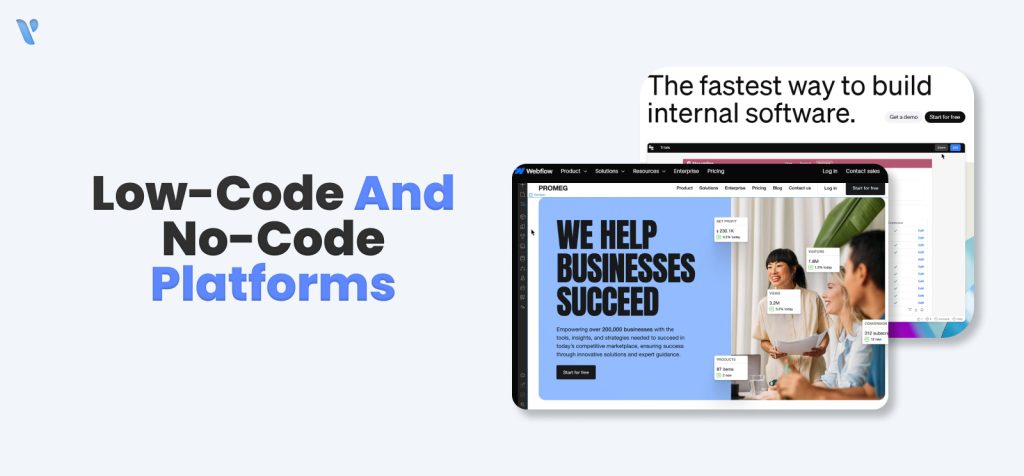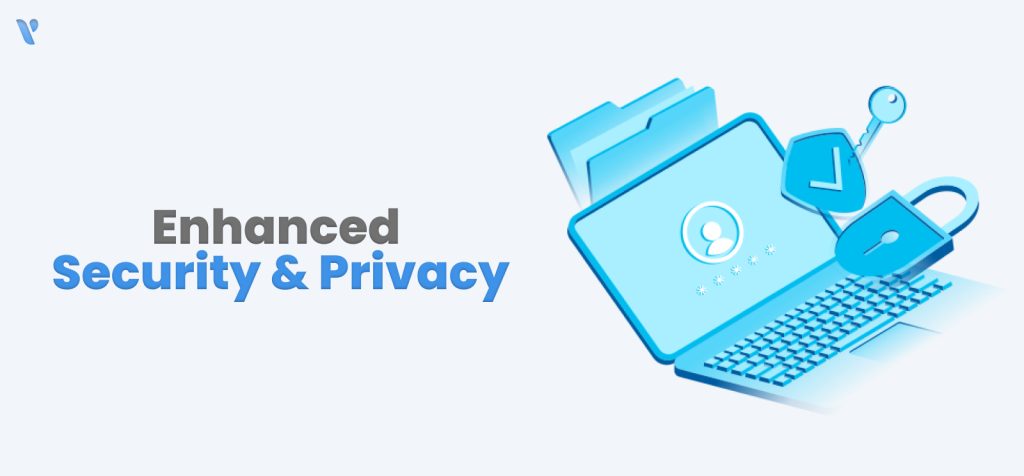Why SaaS Development Is the Future: 2025 Key Trends and Insights

The world of Software as a Service (SaaS) is changing fast. More businesses are switching to cloud-based tools, making SaaS development an essential part of daily operations. With advancements in AI, data analytics, mobile-friendly apps, and better security, SaaS is helping companies work smarter and improve customer service.
This blog will cover the following topics:
Whether you’re a startup founder, business owner, or tech enthusiast, this blog will give you valuable insights into the SaaS industry and what’s coming next. Let’s dive in!
Imagine having access to solid software without having to deal with its purchase, installation, or maintenance. Software as a Service (SaaS) does just that! Businesses may access excellent tools at any time and from any location with just an internet connection. No wonder more companies are switching to SaaS every day!
India is driving the adoption of AI in its SaaS startups, with the country’s SaaS market projected to generate $100 billion by 2035.
Developing software as a service (SaaS) includes developing cloud-based apps that customers may use online without needing to be installed locally. The following are the key characteristics of SaaS development:

Essentially, SaaS (Software as a Service) refers to all of the online tools and apps that you use without having to download anything, such as Zoom, Google Docs, or Netflix. However, what comes next? Here are six exciting changes coming to SaaS that you’ll actually care about (no tech jargon, I promise!).

Artificial intelligence (AI) is making software smarter; it’s like having a virtual assistant who knows what you need!
Imagine this: You’re the owner of an internet store. AI examines consumer behavior to provide product recommendations that they will actually purchase rather than speculating about what your customers enjoy!
Real Example: Ever wondered how Netflix always recommends the perfect show? That’s AI at work, learning what you love.

SaaS solutions are becoming more successful at assisting businesses in extracting insights from data, which is the new gold. Businesses may improve performance and maintain their competitiveness by using business intelligence (BI) tools and analytics to make more informed decisions.
Imagine This: Despite being in charge of a marketing campaign, you are not sure which strategy will bring in the most customers. You can focus even more on your data by using BI tools to analyze it and identify the precise approach that works!
Real Example: Ever wonder how a marketing campaign knows exactly what’s working? BI tools track user behavior and optimize strategies. With tools like Google Analytics, you can see exactly how visitors engage with your website and tweak it for better results.

In earlier times, software could only be created by IT experts. With low-code and no-code platforms, anyone can now create apps by just dragging and dropping components, much like when designing a slideshow!
Imagine this: You want a custom app to take online orders for your bakery. You make it yourself in a few clicks rather than paying a developer.
Real Example: Businesses can design tools and figure out processes without spending a lot of money on developers by using platforms like Bubble and Zapier.

Ever tried to stream a movie, and the app crashed? That happens when a company depends on just one cloud provider. Now, SaaS companies are using multiple clouds, so if one fails, another takes over.
Imagine this: You are the owner of an app that delivers food online. Your program continues to function normally even if one cloud service experiences problems because another one takes over.
Real Example: To keep the binge-watching going, Netflix distributes its service across several clouds rather than depending on just one!

Hackers try to get in more often the more we depend on SaaS. Businesses are improving their security posture in response to stricter data protection laws, multi-factor authentication, and threat detection driven by AI.
Imagine this: To ensure that it is you, the system automatically asks for additional verification when you try to access your account from a foreign country.
Real Example: Video calls were made more secure when Zoom adopted end-to-end encryption in response to security concerns during the pandemic.

If one component of the outdated software failed, the entire system would crash because it was built as a single, integrated system. Now, companies are using microservices—tiny, independent parts that work together. If one breaks, the rest still runs fine!
Imagine this: You can use your banking app to check your balance, make payments, and keep track of your spending. If one microservices functionality (such as expenditure tracking) fails, the others continue to function.
Real Example: Spotify has separate microservices for music streaming, playlist creation, and social sharing. If one feature glitches, your music still plays!
You can also read our blog on:
The continuously changing SaaS industry offers businesses both possibilities and challenges. For businesses hoping to keep a competitive advantage in this digital environment, keeping up with the most recent trends and technology developments is essential. Businesses can improve client experiences, promote growth, and optimize their SaaS strategies by learning about and using these developments.

Software as a service (SaaS) is a distribution process that offers subscription-based app access from any device with Internet access. Software providers host and manage the software together with all the necessary data in this case. Also, SaaS customers rent the software rather than purchasing and maintaining it.
SaaS is sometimes referred to as subscriber, software-as-a-service, on-demand software, or software subscription services. All of these titles refer to the same software distribution framework, which delivers software using the Internet through subscriptions.
The main trends include the growing use of AI and machine learning, the rise of low-code/no-code platforms, an increased focus on security, the shift to mobile-first solutions, and the emergence of usage-based pricing models.
The growing use of AI and machine learning, the emergence of microservice architecture, the increased emphasis on security, the growing importance of the user experience, and the development of low-code/no-code platforms are some of the main trends.
Low-code and no-code platforms are transforming SaaS development by enabling businesses to create custom applications quickly and efficiently, without requiring deep technical expertise. This leads to shorter development cycles and more responsive solutions to changing market demands.
YeasiTech is a trusted IT service partner with 8+ years of experience, empowering 250+ businesses with scalable web, mobile and AI solutions.
Explore related topics to broaden your understanding and gain actionable insights that can transform your strategies.